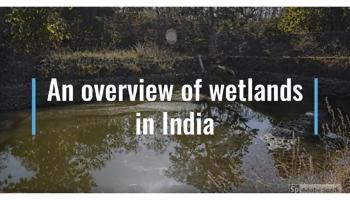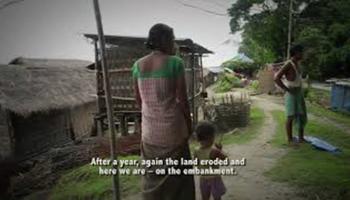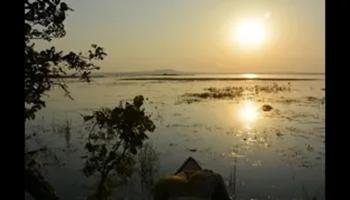Lakes, Ponds and Wetlands
Systematic procedure for the computation of evaporation from lakes - A research report by National Institute of Hydrology
Posted on 08 Jul, 2010 10:49 PMThe report presents a systematic procedure for the computation of evaporation from lakes. Water balance of a lake depends upon the relative importance of various inputs and outputs to and from the lake. In Indian conditions, evaporation loss constitutes one of the major outputs from a lake and as such, the water regime of a lake and yield are influenced by it. In order to conserve and use the water, there is an urgent need for a first hand reasonable accurate estimate of its water balance.
Water quality studies of Lake Nainital and surroundings – A research report by National Institute of Hydrology
Posted on 08 Jul, 2010 09:57 PMThe report provides an account of the findings of water quality studies of Lake Nainital and surroundings. Even though quite a few water quality investigations have been conducted by other researchers, they were more focused on biological aspects and overlooked the hydrological aspects. Further, not all of the earlier studies on Nainital incorporated the groundwater quality aspects, which are essential to establish the background values that can be ascribed to the geology of the region. Only after establishing these, the pollution levels can be assessed.
Status report on Sagar lake - A research report by National Institute of Hydrology
Posted on 01 Jul, 2010 11:04 AMThe report attempts to compile all the published works on the Sagar lake in one place. This includes brief description of the historical and the geographical background of the lake, details of water quality analysis carried out in various years, present position of the lake and various schemes proposed and implemented for the improvement of the condition of the lake.
Water quality monitoring and evaluation of Mansar lake - A research report by National Institute of Hydrology
Posted on 30 Jun, 2010 07:56 PMThe study attempts water quality monitoring of Mansar lake to detect the various water quality parameters. The lake water conditions were monitored by collecting water samples from different depths to determine the spatial and temporal variations.
Water quality study of the Mansar lake of Udhampur - A research report by National Institute of Hydrology
Posted on 29 Jun, 2010 07:30 PMThe report deals with the findings of a water quality study of Mansar lake in Udhampur district of Jammu and Kashmir. The water samples from different locations at the surface and from three zones (viz, epilimnion, metalimnion and hypolimnion) were collected and physico-analysis carried out.
Study of Lake Nainital: Groundwater interaction using Isotope techniques - A research report by National Institute of Hydrology
Posted on 25 Jun, 2010 12:03 AMThe study undertakes hydrological investigations to develop a conceptual model for the water balance of Lake Nainital in Kumaon Himalayas. All the components of lake water balance, except the sub-surface ones, have been measured or estimated using standard methods like isotope mass balance method in conjunction with the conventional water balance method. The sub surface outflow from the lake was assessed by studying the hydraulic interconnection of the lake and downstream springs using environmental tracers.
Performance evaluation of percolation ponds for artificial recharge - A research report by National Institute of Hydrology
Posted on 23 Jun, 2010 07:39 PMThe study assesses the quantum of seepage to the aquifers through percolation ponds and establishes their zone of influence, and based on these, correlates the quantum of seepage to the total storage loss in the pond. The assessment of the benefits of the ponds, in terms of artificial recharge to the aquifers is done through an intensive study of two percolation ponds in Tamil Nadu.
A percolation pond is a small water harvesting structure, constructed across a natural stream or water course to harvest and impound the runoff from the catchments for a longer time, to facilitate vertical and lateral percolation of impounded water into the soil substrata, thereby recharging groundwater storage in the zone of influence of the pond.
Preliminary hydrological investigations for Deepar Beel and strategies for its monitoring and management - A research report by National Institute of Hydrology
Posted on 23 Jun, 2010 07:30 PMThe study presents a preliminary hydrological investigation of the Deepar Beel, a natural freshwater lake near Guwahati, and notes the theoretical aspects of the techniques to be used, methodologies and instruments for conducting a detailed study of the natural processes at hand.
Deepar Beel acts as a natural stormwater reservoir during monsoon period and is greatly influenced by the rapid urbanization and improper land use pattern of Guwahati. It receives a large portion of sewage of the city, but the preliminary investigations reveal that the Beel is largely free from significant levels of pollution. This is due to the dilution effects of large storm water runoff during monsoons as also the release of the Beel water to river Brahmaputra through the Khanajun outlet. Yet, the soil quality is found to have deteriorated to a large extent.
Various parameters of soil and water quality indicate that the process of eutrophication is in progress in this wetland. Although many trace elements are present in the Beel sediments, no known toxic effects are observed on aquatic life. Increasing sedimentation and reduction in lake water capacity and inflow are also observed.
Bathymetric study of Mansar lake in Udhampur district - A research report by National Institute of Hydrology
Posted on 22 Jun, 2010 08:11 PMThe study undertakes an exhaustive survey of the morphometric features of the Mansar lake, Udhampur district to prepare a bathymetric map of the lake. The map is useful in understanding the lake hydrological behavior through a study of volume, sedimentation rate and identification of the high siltation zone. The study is significant as the lake water can be utilized for drinking and irrigation purposes for the water scarce Kandi belt of Jammu.
A hydrological study of Lake Nainital – A research report by the National Institute of Hydrology
Posted on 22 Jun, 2010 08:06 AMThe hydrological study develops a water balance of the Lake Nainital to facilitate the utilization of its water in a planned and systematic manner. The lack of knowledge of input and output parameters such as subsurface inflow, use of lake water for domestic and industrial purposes, evaporation loss and leakage from lake including the outflow through sluice gates had created uncertainty in determining the availability of water in the lake. The study attempts to understand the behavior of the input and output parameters in detail by using both conventional and isotopic techniques.
The lake meets the local drinking and domestic water needs and is for the most part fed by rainfall during monsoon and by inflow from perennial springs and subsurface inflow during the non-monsoon season.







